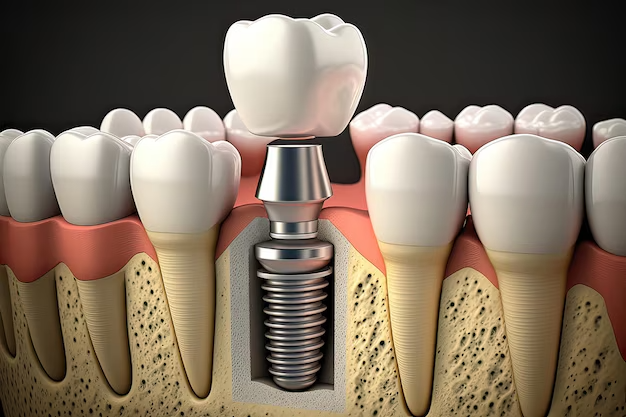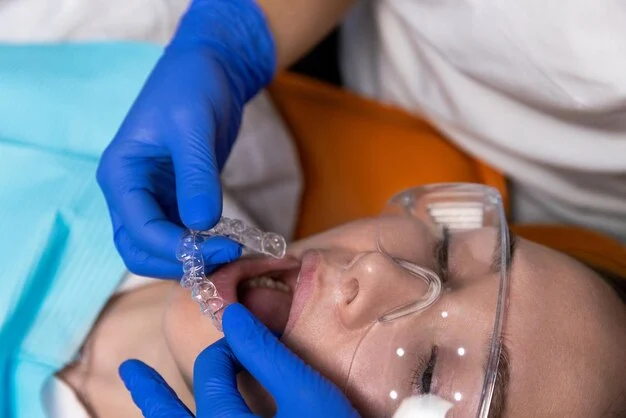Welcome to our comprehensive guide on does composite bonding hurt? If you’re looking to enhance the appearance of your smile or address minor imperfections in your teeth, composite bonding could be the ideal solution for you. In this guide, we’ll explore everything you need to know about composite bonding, from the procedure itself to its common uses in dental practice. Whether you’re interested in repairing chips and cracks, closing gaps between teeth, or improving the overall symmetry and alignment of your smile, composite bonding offers a versatile and effective cosmetic dental treatment option. Join us as we delve into the world of composite bonding and discover how it can help you achieve the smile of your dreams.
Introduction to Composite Bonding
Composite bonding is a versatile cosmetic dental procedure aimed at enhancing the appearance of teeth by repairing chips, cracks, discoloration, or gaps. This non-invasive treatment involves the application of a tooth-colored resin material directly onto the tooth surface to improve its shape, size, and color.
Composite Bonding Procedure
Composite bonding is a cosmetic dental procedure aimed at improving the appearance of teeth affected by various imperfections such as chips, cracks, stains, or gaps. The procedure typically begins with a thorough examination by the dentist to assess the condition of the teeth and determine the extent of treatment needed.
Once the treatment plan is established, the tooth surface is prepared by etching it with a mild acidic solution. This creates a roughened texture that helps the composite resin adhere more effectively to the tooth. Next, a bonding agent is applied to the prepared tooth surface to enhance the bond between the tooth and the composite material.
The dentist then carefully selects a shade of composite resin that matches the natural color of the patient’s teeth. The composite resin is applied to the tooth in layers and sculpted to achieve the desired shape and contour. Specialized tools are used to mold and shape the resin, ensuring proper alignment with adjacent teeth and a natural-looking result.
Once the desired shape is achieved, a curing light is used to harden the composite resin and bond it securely to the tooth surface. After the resin has cured, the dentist further refines the shape and contours of the restoration, ensuring a seamless blend with the surrounding teeth. Finally, the treated tooth is polished to a smooth finish, completing the composite bonding procedure.
Common Uses of Composite Bonding in Dentistry
Composite bonding is a versatile cosmetic dental treatment with a wide range of applications in modern dentistry. One of the most common uses of composite bonding is repairing minor chips and cracks in teeth. Whether caused by trauma, decay or wear and tear, these imperfections can detract from the overall appearance and function of the smile. Composite bonding allows dentists to restore the natural shape and contour of the tooth, providing both cosmetic and functional benefits.
Another common use of composite bonding is filling in gaps or spaces between teeth, a condition known as diastema. These gaps can occur naturally due to genetics or develop as a result of tooth loss or shifting. Composite bonding offers a conservative and effective solution for closing these spaces, improving the overall symmetry and alignment of the smile.
Composite bonding is also frequently used for reshaping irregular or misaligned teeth. Teeth that are too small, misshapen, or unevenly spaced can detract from the overall harmony of the smile. By carefully sculpting and contouring the composite resin, dentists can enhance the appearance of these teeth, creating a more balanced and aesthetically pleasing smile.
Does Composite Bonding Hurt?
Composite bonding is a popular cosmetic dental procedure used to enhance the appearance of teeth by repairing chips, cracks, gaps, and discolorations. While it’s natural to have concerns about does composite bonding hurt during and after the treatment, most patients find composite bonding to be a relatively painless procedure. Dentists take various measures to ensure patient comfort, including the use of local anesthesia and high-quality composite materials.
Addressing Common Concerns
Composite bonding is generally a painless procedure, but it’s natural to have concerns about discomfort or sensitivity during and after the treatment. However, most patients report minimal to no Composite Bonding hurt or discomfort during the procedure itself. Dentists often use local anesthesia to numb the area before applying the composite resin, ensuring a comfortable experience for the patient. The composite material used in bonding is malleable and easily shaped, allowing for precise application without causing discomfort.

Factors That May Influence Sensitivity
While composite bonding is typically well-tolerated, some factors may influence Composite Bonding hurt or sensitivity in certain individuals. One such factor is the extent of tooth preparation required before bonding. In cases where significant enamel needs to be removed to accommodate the bonding material, patients may experience mild sensitivity afterward. However, advances in dental technology have minimized the need for extensive tooth preparation, reducing the likelihood of post-procedure sensitivity.
Another factor that may contribute to sensitivity is the quality of the bonding material used. High-quality composite resins are formulated to mimic the natural properties of tooth enamel and are less likely to cause sensitivity or irritation. The skill and expertise of the dentist performing the procedure play a crucial role in minimizing discomfort. A skilled dentist will take care to ensure proper bonding technique and precision to minimize any potential discomfort for the patient.
Pain Management During Composite Bonding
Composite bonding is a dental procedure used to repair or improve the appearance of teeth, often without the need for extensive anesthesia. However, ensuring patient comfort during the process is essential.
Overview of Anesthesia Options Available
Anesthesia is commonly used during dental procedures to numb the treatment area and minimize Composite Bonding hurt or discomfort. For composite bonding, local anesthesia is the most frequently used option. Local anesthesia is administered directly to the treatment site, numbing the tooth and surrounding tissues to prevent pain during the procedure. The numbing effect typically lasts for a few hours, providing ample time for the dentist to complete the bonding process comfortably.
In some cases, patients may experience anxiety or heightened sensitivity, warranting the use of additional sedation methods. Nitrous oxide, commonly known as laughing gas, is a safe and effective sedative option that can help relax anxious patients during dental procedures. Administered through a mask worn over the nose, nitrous oxide induces a state of relaxation and euphoria, allowing patients to remain calm and comfortable throughout the bonding process.
Techniques to Minimize Discomfort
In addition to anesthesia, several techniques can be employed to minimize Composite Bonding hurt or discomfort during composite bonding. One such technique is the application of a desensitizing agent to the tooth surface before bonding. Desensitizing agents help block pain signals and reduce sensitivity, making the bonding process more comfortable for the patient.
Dentists may also use advanced bonding techniques and materials designed to minimize post-operative sensitivity. The careful application of bonding agents and composite resin ensures a secure and comfortable bond between the tooth and the composite material. Dentists may employ rubber dam isolation techniques to protect the surrounding tissues and minimize irritation during the procedure.
Furthermore, maintaining open communication between the patient and the dentist is crucial for ensuring comfort during composite bonding. Patients should feel comfortable expressing any concerns regarding composite bonding hurt or discomfort they may experience throughout the procedure. Dentists can then adjust their techniques or provide additional measures to alleviate discomfort and ensure a positive bonding experience.

Managing Sensitivity After Composite Bonding
Composite bonding can sometimes lead to temporary sensitivity in the treated teeth. However, with proper post-procedure care and awareness of potential causes, sensitivity can be effectively managed.
Tips for Post-Procedure Care
After composite bonding, it’s important to follow specific care instructions to minimize sensitivity and ensure optimal healing:
- Avoid Extreme Temperatures: Refrain from consuming very hot or cold foods and beverages immediately after the procedure, as temperature extremes can trigger sensitivity.
- Use Desensitizing Toothpaste: Consider using a desensitizing toothpaste recommended by your dentist to help alleviate sensitivity. These toothpastes contain special ingredients that block pain signals and provide relief from sensitivity.
- Practice Good Oral Hygiene: Maintain good oral hygiene practices, including brushing and flossing regularly, to keep the treated teeth and surrounding areas clean and free from bacteria.
- Limit Acidic Foods: Acidic foods and beverages can exacerbate sensitivity, so try to minimize the consumption of citrus fruits, soda, and other acidic substances.
- Wear a Nightguard: If you tend to grind your teeth at night, wearing a nightguard can help protect the bonded teeth from excessive pressure, reducing the risk of sensitivity.
- Attend Follow-Up Appointments: Attend any follow-up appointments scheduled with your dentist to ensure that the bonding material has properly cured and to address any concerns or issues related to sensitivity.
Potential Causes of Sensitivity
Several factors can contribute to sensitivity following composite bonding:
- Dental Trauma: The bonding process may cause minor trauma to the tooth, leading to temporary sensitivity. This sensitivity typically resolves on its own as the tooth heals.
- Excessive Bonding Material: If the bonding material extends too close to the tooth’s nerve endings, it can cause sensitivity. Your dentist will take care to ensure that the bonding material is applied precisely to avoid this issue.
- Pre-Existing Tooth Sensitivity: Some individuals may already have sensitive teeth due to factors such as enamel erosion, gum recession, or tooth decay. Composite bonding can temporarily exacerbate existing sensitivity in these cases.
- Improper Bite Alignment: If the bonded tooth does not fit properly with the opposing teeth when biting down, it can create pressure and lead to sensitivity. Your dentist may need to adjust the bonding material or your bite to alleviate this issue.
Conclusion
Composite bonding offers a versatile and minimally invasive solution for enhancing the appearance of teeth, addressing various cosmetic imperfections, and restoring smiles. This cosmetic dental procedure provides numerous benefits, including natural-looking results, durability, and affordability. Despite the potential for composite bonding hurt or discomfort, proper pain management techniques and post-procedure care can help patients navigate any challenges and enjoy the long-term advantages of composite bonding. By working closely with a skilled and experienced dentist, individuals can achieve the smile they desire and boost their confidence with this effective cosmetic dental treatment.
FAQs
Does composite bonding hurt during the procedure?
No, composite bonding is typically a painless procedure. Your dentist may use local anesthesia to numb the area, ensuring your comfort throughout the process.
How long does composite bonding last?
With proper care and maintenance, composite bonding can last anywhere from 5 to 10 years or even longer. However, the longevity of the bonding material may vary depending on factors such as oral hygiene habits and lifestyle choices.
Can composite bonding fix chipped or broken teeth?
Yes, composite bonding is an effective solution for repairing chipped, cracked, or broken teeth. The bonding material is applied directly to the affected tooth, reshaping and restoring its appearance to blend seamlessly with the surrounding teeth.












